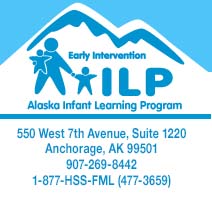
Developmental Checklist: 9 - 12 Months
Your baby is very curious about everything. He is beginning to take control of his body through crawling, climbing, cruising, and beginning steps toward walking alone.
As he explores, remember to talk to him about his surroundings. Label objects: “bathtub” or “eyes-nose-mouth” and listen to his responses. Your baby is ready for simple instructions such as: “stop,” “sit down,” “wave bye-bye,” “get up” or “come here.” He will gradually begin saying words that you can recognize such words as “mama,” “dada,” “ba-ba,” “baby and “bird”. Don’t forget to smile and praise your baby for the little things as well as the big things, when he learns something new or does something well. He will be learning big things and little things every day.
Things Your Child May Do At This Age
- Explore and handle objects: wave, shake, twist, turn, squeeze, poke and even put them in his mouth
- Move a toy from one hand to the other
- Hold 2 toys at the same time; maybe hit them together
- Crawl while holding a toy
- Pull string to get the toy at the other end
- Pick up small objects between thumb and 1 or 2 fingers, although not with ease
- Take steps alone; walk like a robot; crawl up stairs
- Begin to say some words
- Walk if one or both hands are held
- Pull self up to stand and move while holding on to furniture (cruising)
Safety First!
- Limit your baby’s time in play-pens, jump seats or behind a gate.
- Remove dangerous items (such as house plants or cleaning products) that are within his reach.
- Lock doors and cabinets as your baby begins to cruise and climb. Remember: Any tools, knives, firearms, matches or lighters can be deadly to your little one. These objects must be safely stored in an area your child cannot open.
- Supervise him when crawling or cruising. He could fall down stairs, bump into things or pull things over on himself, such as pots on the stove.
- Always use a car seat when your child is riding in a car.
- Remember: never leave open buckets of water out as your baby could tumble into the bucket head first.
- Car seats should be used at all times and should be rear-facing in the back seat until the child is both over one year of age and over twenty pounds.
Toys For This Age
- Pots, pans and wooden spoons
- Stacking blocks
- Push/pull type toys
- Cardboard Books
Health Hints
- Well Baby Check-ups: 9 months, 12 months.
- Immunization at 12 months: HIB, Polio, MMR, PCV, Hepatitis B and (if not given at six months) Chickenpox vaccine (Varicella).
- Offer a plastic drinking cup to begin limiting when and where the bottle is used. Your baby’s teeth are beginning to come in and a bottle can lead to poor mouth development and cavities.
- Avoid giving him too many snacks as a way to occupy your baby when he is bored or when you are busy.
- Continue wiping first teeth with a clean, damp cloth or brush with a very soft, tiny infant toothbrush moistened with water.
Nutrition Notes
- Your baby can begin to feed himself finger foods.
- She can begin to feed herself with a baby spoon.
- Feed your baby iron-fortified cereal, mashed vegetables, and fruit, ground meat and fruit juice (limiting the fruit juice to ý cup of juice each day and refilling her cup with water).
- By ten to twelve months, wean your baby from the bottle. Breast feeding can continue. Introduce whole milk. Do not offer low fat milk until 2 years of age.
- By ten to twelve months your baby can eat these family foods: vegetables and fruit, cereal, bread, whole eggs, mashed beans, fish, meat and cheese.
Things You Can Do Every Day To Help Your Child Grow
- Remember to encourage your baby to talk when you ask a question or are trying to locate something: “Would you like to go outside?” or “Can you find your doll?”
- Expand your daily reading materials and think numbers: “Let’s read one book.”
- Remember, your baby must learn about these things: hot and cold, up and down, in and out, empty and full, stand and sit, wet and dry and big and little.
- Encourage your baby to crawl, climb and cruise by providing safe places both indoor and outdoors.
- Help your baby understand relationships by explaining how things work. “The stove is hot. It will burn and hurt you.” Or, “When we turn the light on, we can see better.”
